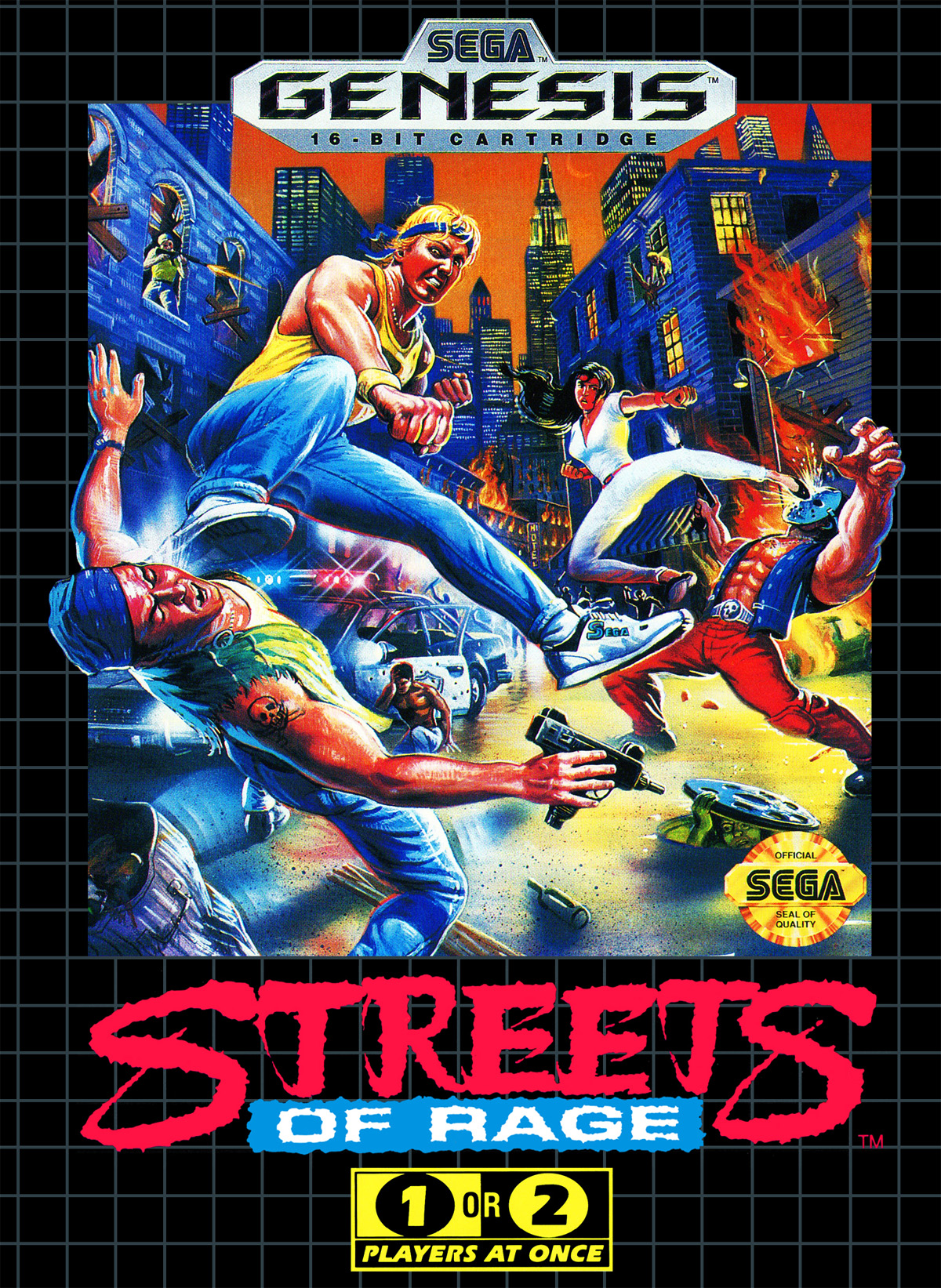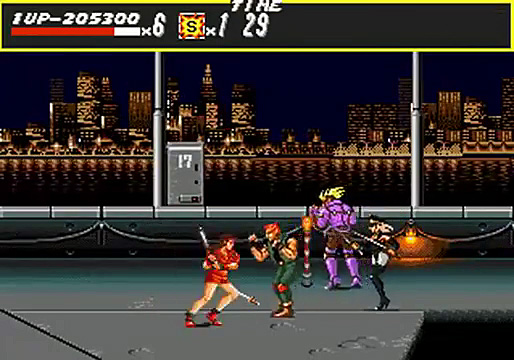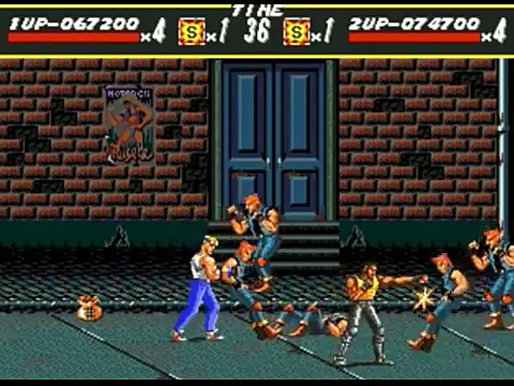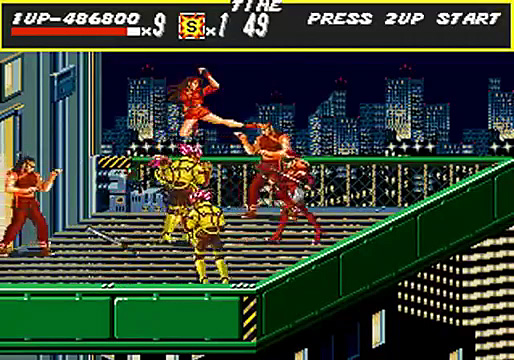
 |
Streets of Rage
Developer: Sega |
When talking about the Sega Genesis, you always gotta to talk about the classics -- and there are a lot of them. Of course there are the Sonic games, the Sega versions of Aladdin and Mortal Kombat, Mutant League Hockey, ToeJam & Earl, Gunstar Heroes, the list goes on! But one that is near and dear to many is the Beat 'em up, Streets of Rage. And rightfully so as it is a shining example of a game that includes a high level of quality shown through its visuals, audio, and gameplay.
The story is light on content, but incredible nonetheless.
"This city was once a happy, peaceful place…until one day, a powerful secret criminal organization took over. This vicious syndicate soon had control of the government and even the police force. The city has become a center of violence and crime where no one is safe.
Amid this turmoil, a group of determined young police officers has sworn to clean up the city. Among them are Adam Hunter, Axel Stone and Blaze Fielding. They are willing to risk anything…even their lives…on the…
Streets of Rage"
Okay, it’s actually kind of generic, but it is how the game’s opening presents the story to the player that truly pumps up the seriousness and how it’s basically up to your gang of three to stop what is essentially a gang of thousands. To accomplish this seemingly impossible goal, all three police officers have to go outside the law, so they are all ex-cops, walking the streets at night and working their way to the organization’s HQ to take down the leader, Mr. X.

Along the way, an APB of sorts is placed on your group to make sure you don’t succeed. Wave after wave of the city’s worst will approach from all sides and try to stop you; from petty thugs, knife wielding goons, ninjas, ladies with whips, axe throwers, torch jugglers, and many more will do all they can to take you out. But with being experts in boxing, judo, and the martial arts, they may have underestimated the group’s abilities.
When it comes to playing the game, the actions you can control are classic simple: attack, jump, and special. The attack button can be used in conjunction with the d-pad for combos like throws and grapples. The special is calling for backup. When this happens, a police cruiser shows up to the scene and uses an RPG to clear the field, which helps out tremendously when things get hairy. Weapons can be used to help fight back foes. Knives, bottles, pipes, bats, and pepper spray are either hidden in things like trashcans or barrels or can be taken from enemies that wield them.

The game does a great job of having a natural progression in regards to moving around the city for each level, or what they call “rounds.” You start off in the glistening downtown area and then make your way to the dark, shady region of the city. Next is the city’s dirty shorelines were the camera is pointing inward towards the city rather than the ocean. Afterwards you cross a bridge and then catch a ride on a ferry. Seems natural and flows nicely instead of something like: downtown, sewer, rooftop, bridge, etc.
The stages are well designed and include a lot of animation in them. For example the downtown level has a lot of retail shops and restaurants with neon signs blinking and flashing while the beach includes waves crashing in the foreground and the occasional rain storm. The backgrounds are also tiered so you see closer items scroll faster than the tiered areas further in the distance. All are great attention to detail that is noticed when playing the game; and in addition, a great soundtrack too.

As ostentatiously shown on the title screen, Yuzo Koshiro supplied the soundtrack. Taking advantage of the FM sound chip in the Genesis -- and inspired by “real life” techno music -- the player is treated to a wonderful collection of tracks. The boss battle music, the into, credits, they all fit the game’s style of a dense, urban city well and gives it a bit of edge compared to its Beat 'em up rival, Final Fight for the SNES.
Being a successful hit, Streets of Rage would turn into a trilogy of games, with the sequel following a year later in 1992 and then again in 1994. Streets of Rage 2 would be as expected for a sequel -- better graphics, combos, and specials -- but leaving the city mid-way through the game for other environments, and the third game being so off the rails and wacky by including enemies like a boxing kangaroo, and its odd story by replacing city council members with robots, it may make some yearn to go back to the gritty story of the original.
Posted on: July 14, 2016
